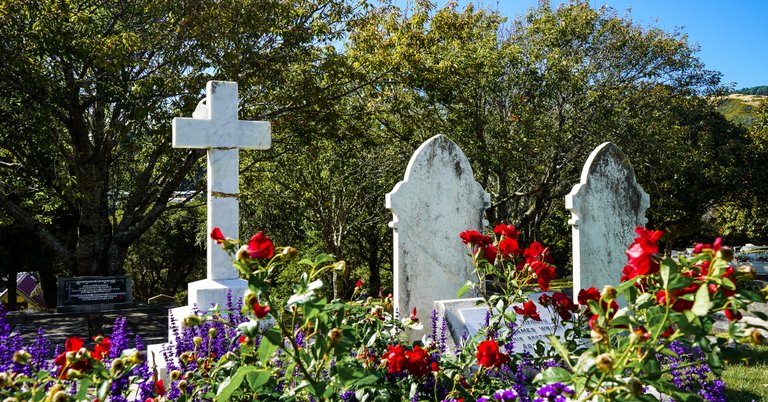

Porirua Cemetery contains not just gravesites and memorials, but is somewhere where the stories of our people can be told. Below you will find the tales of a number of the veterans, pioneers and settlers interred there. These names – and this website – will linked by a QR code, should you ever visit the cemetery. Stories about our veterans have been crafted by historian Allan Dodson
There are many notable graves in Porirua Cemetery. The stories of some of those who are buried there can be found below.
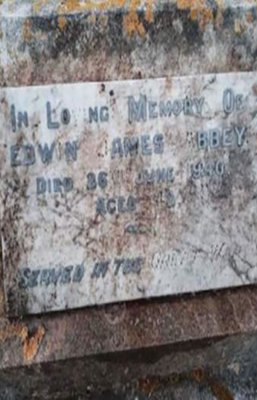
Edwin James Abbey was born in Moscow in 1898 to parents possibly of Scottish descent. The family moved to England prior to the start of WWI, settling in Sussex.
He served in the war with the British Expeditionary Force in France and was wounded in 1918. In 1926 he moved to New Zealand, as a farmer.
Buried: Porirua Cemetery, Public (Non-Conformist) Area, Row P Plot 12.
Click here to learn more about Edwin through Porirua War Stories.
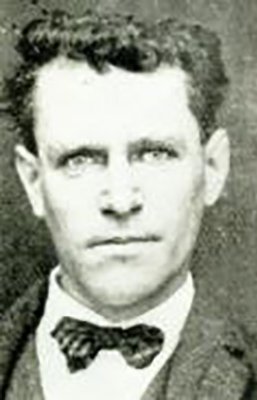
William Thomas Ackerman was born in Christchurch in 1888, to a Prussian father and Australian mother. He may have been a conscientious objector as records showed he was court-martialed and sentenced to 120 days in prison for desertion. He was discharged in 1919 and spent much of the 1920s engaged in petty crime and theft.
Buried: Porirua Cemetery, Public (Non-Conformist) Area, Row D, Plot 50.
Click here to learn more about William through Porirua War Stories.

Born in Wellington in 1888, Robert went to Wellington College and attended Victoria University. He was injured while training and although shipped to England in 1917 to serve, he was deemed medically unfit and discharged. After the war he farmed in Otaki and had a law practice in Porirua, as well as serving on Makara County Council.
Buried: Porirua Cemetery, Church of England Area, Row 1 Plot 11.
Click here to learn more about Robert through Porirua War Stories.
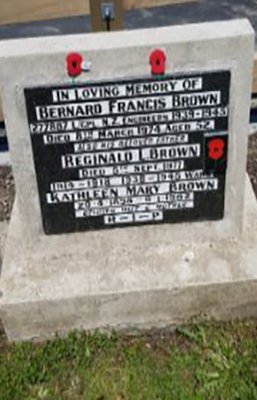
Bernard Francis Brown was born in Wellington in 1921 and enlisted in the NZ Army in July, 1940. He was shipped to Egypt in 1943 and was wounded in Italy in 1944, possibly by mortar shell. He returned to New Zealand and lived with his parents in Linden.
Buried: Porirua Cemetery, Public (Non-Conformist) Area, Row SA Plot 5.
Click here to learn more about Bernard through Porirua War Stories.
Charles Crabbe is the first burial in Porirua Cemetery. He was committed to Auckland Prison on 18 October 1862. He is listed as being a stonemason, but with a violent nature both to himself and also others. He is reported to have made a number of escapes, one to the Waitakeres but was bought back by the police. He was transferred from the Auckland Asylum to the Porirua Mental Asylum on 19 July 1894 as the new buildings of Porirua Asylum were being prepared to be officially opened in 1887.
In July 1895, Charles took to his bed and was tended by the staff and fed a special diet of port wine and custard. He died ‘quietly’ on 13 September 1896 from chronic brain and chest disease. At Charles’ Coroner’s Inquest, Charles was considered by the Superintendent of Porirua Asylum ‘to be demented and delusional but was quiet and used to take the post to the village and to take messages'.
As required by the law of the day, a coroner’s jury of six men drawn from the district were required to agree to the cause of death. Four of these are known to be landowners/ sheep farmers, one was the proprietor of the Porirua Hotel, and one was a ‘servant’. Four of the jurors (James Eastwood, Anthony Wall, John Mitchell and James Wright) are also now interred in marked family graves in Porirua Cemetery.
Charles' original burial was very plain and like the majority of the early burials is now unmarked. The grave will be marked by Porirua City Council with a QR code on the site which is about where the designated graves at the southern end of the cemetery dip towards the road.
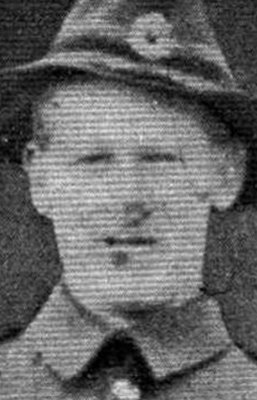
Thomas James Dent was born in Porirua in 1898. His father was an attendant at the Porirua Mental Asylum. He was working as a labourer when he enlisted for WWI, "adjusting" his birth date to 1896 so he was old enough. He was killed during an offensive in France in August 1918.
Buried: Porirua Cemetery, Public (Non-Conformist) Area, Row N Plot 32. Click here to learn more about Thomas through Porirua War Stories.

Arthur (Bill) Stanley Fisher was in Johnsonville in 1922 and was raised in Paremata. Bill was active in Paremata Sailing Club and represented the club regularly. He enlisted in 1939 and was in the Royal NZ Navy, where he served on HMNZS Monowai, which patrolled near Fiji. He died in a tragic incident while on shore leave in Auckland.
Porirua Roll of Honour Karori Cemetery plaque.
Click here to learn more about Arthur through Porirua War Stories.
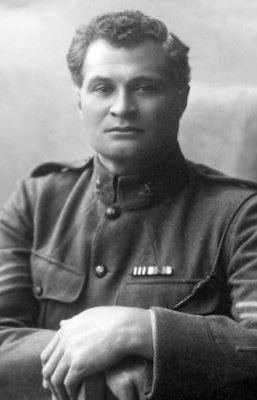
Frederick Goldsmith was born in Gisborne in 1875. He began work as an attendant at Porirua Mental Hospital about 1902 and was a founding member of the Mental Hospital Club, now Western Suburbs. He enlisted in the NZ Expeditionary Force in 1916 and served in Palestine. He returned to work at the Porirua Mental Hospital in 1919.
Buried: Porirua Cemetery, Church of England Area, Row P Plot 36. Click here to learn more about Frederick through Porirua War Stories.
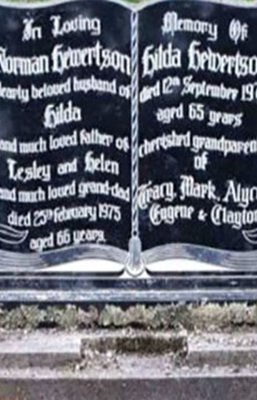
Emily Elizabeth Hasse was born in 1910, probably in Paekakariki. She departed for overseas service in June 1943 as a nurse, serving on the 1st NZ Hospital Ship in Bari, Italy. She was discharged from service in 1945 and returned to live with her parents in Porirua.
Buried: Old Porirua Cemetery.
Click here to learn more about Hilda through Porirua War Stories.
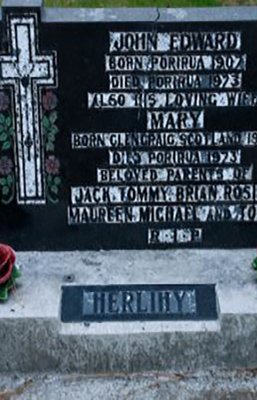
John Edward Herlily was born in Porirua in 1908 and attended Porirua School. A carpenter, he he enlisted in 1939 after war was declared and saw combat in Greece and Crete. He returned after the war to resume his job as a carpenter at Porirua Mental Hospital.
Buried: Porirua Cemetery, Roman Catholic Area, Row B Plot 20.
Click here to learn more about John through Porirua War Stories.
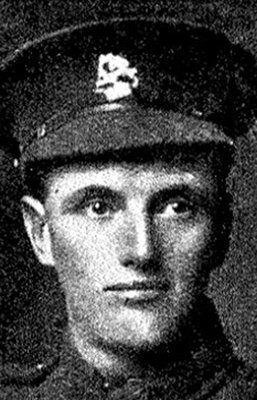
John (Jack) Richard Hoare was born in Napier in 1888 but his family had moved to Wellington by 1911. He enlisted in 1915 and saw action at Gallipoli. His regiment went to France in 1916, where he was wounded in the chest and abdomen, so he was shipped back to NZ. He married and lived in Tawa Flat, but died in 1920.
Buried: Porirua Cemetery, Public (Non-Conformist) Area, Row D Plot 16.
Click here to learn more about John through Porirua War Stories.

James Joseph Lawlor was born in Ireland in 1900 and while initially serving in the Royal Navy as a cook in the early 1920s, transferred to the NZ Division of the Royal Navy. He spent the WWII years at Devonport, eventually being promoted to Petty Officer. He spent his later years living in Bedford St, Porirua.
Buried: Porirua Cemetery, Roman Catholic Area, Row BB Plot 18.
Click here to learn more about James through Porirua War Stories.
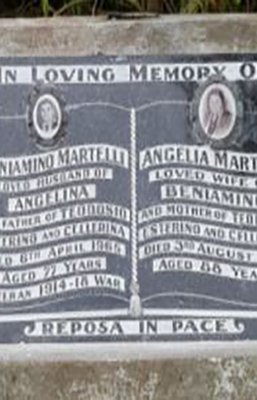
Beniamino (Benjamin) Martelli was born in Lombardy, Italy, in 1887, and saw action in WWI for Italy against the Austro-Hungarian Empire. He emigrated with his family to NZ in the late 1920s and was a dairy farmer in the Johnsonville area.
Buried: Porirua Cemetery, Roman Catholic Area, Row A Plot 36.
Click here to learn more about Beniamino through Porirua War Stories.
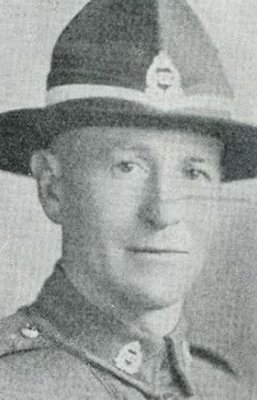
Milton Francis Mexted was born in Tawa in 1907 and attended Tawa Flat School. Enlisting in 1939 and sailed with the 2nd NZ Expeditionary Force to Egypt in 1940 as a driver in the Petrol Company, helping to supply troops with food, munitions and petrol. He was wounded in Crete and died as a German POW in 1941.
Buried: In the Galatas area, later exhumed and reburied in the Suda Bay War Cemetery after the war.
Click here to learn more about Driver through Porirua War Stories.

Tuaivi Mose was born in the Cook Islands in 1893. He registered for militahttps://poriruacity.govt.nz/services/cemeteries/cemetery-search/cemetery-record-v3/?id=51714ry service in Wellington in 1915 and spent six weeks in Gallipoli at the end of the campaign. He saw service in France, being injured in the Battle of Messines, and ended up in the Middle East before the war ended. In 1966 he came to NZ from the Cook Islands after the death of his wife.
Buried: Porirua Cemetery, Public Lawn Area, Row H Plot 16.
Click here to learn more about Tuaivi through Porirua War Stories.
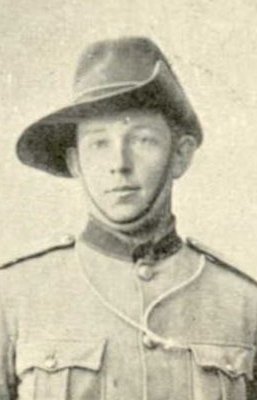
Denis Joseph Ryan was born in Tawa Flat in 1880. He enlisted for service in the South African War in 1899 and served with the NZ Mounted Rifles, but contracted dysentery and was later diagnosed with diabetes mellitus. He arrived back in NZ in October 1900 but died from the affects of diabetes shortly after, with his public funeral reported nationwide.
Buried: Porirua Cemetery, Roman Catholic Area, Row H Plot 42A.
Click here to learn more about Denis through Porirua War Stories.
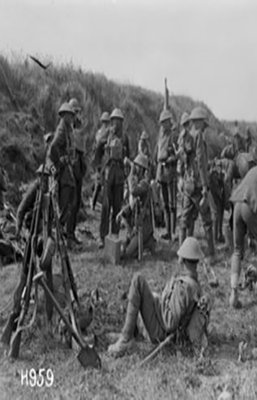
Thomas Francis Ryan was born in Tawa Flat in 1877. Like his brother Denis, he served in the South African War, in 1902, but his and the 8th Contingent, NZ Mounted Rifles' service in South Africa was brief, and Thomas went back to farming at Tawa Flat. He served in France in WWI, at the Battle of Messines, and was killed on the Somme Front in 1918.
Click here to learn more about Ryan through Porirua War Stories.
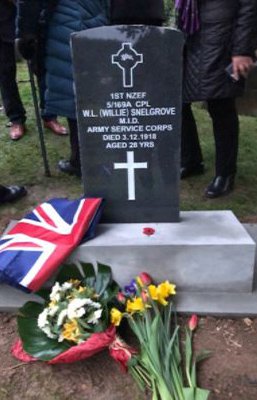
William (Willie) Snelgrove was born in England in 1890 but emigrated to NZ in the early 1900s with his brothers. At the outbreak of WWI he enlisted in the NZ Expeditionary Force and served at Gallipoli before being invalided back to NZ in 1915, suffering defective vision and dysentery. A mechanic, he died during the influenza pandemic outbreak in 1918.
Buried: Porirua Cemetery, Church of England Area, Row C Plot 31.
Click here to learn more about William through Porirua War Stories.
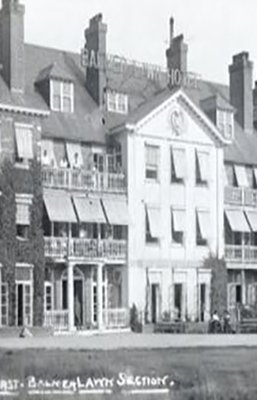
Tom Wright was born in England in 1892 and emigrated to NZ as a young man, working as an attendant at Porirua Mental Hospital. He enlisted in the NZ Expeditionary Force in 1915, serving as a medical officer, nursing traumatised and often patients from the Gallipoli and Palestine campaigns. He and other returning soldiers were given a civic reception in Porirua in late 1919.
There is no record of Tom's death in New Zealand - he may have returned to England.
Click here to learn more about Tom through Porirua War Stories.
Creating a link between the past and future generations is an important way for us to remember how our city has grown and developed. The digital QR code walk allows residents of Porirua and visitors to understand our past, research notable individuals and connect with family members lost.
Our cemeteries team worked closely with historian Allan Dodson, and took into consideration each individual resting at the cemetery, respectfully creating a digital walk connecting past and future generations of Porirua together.